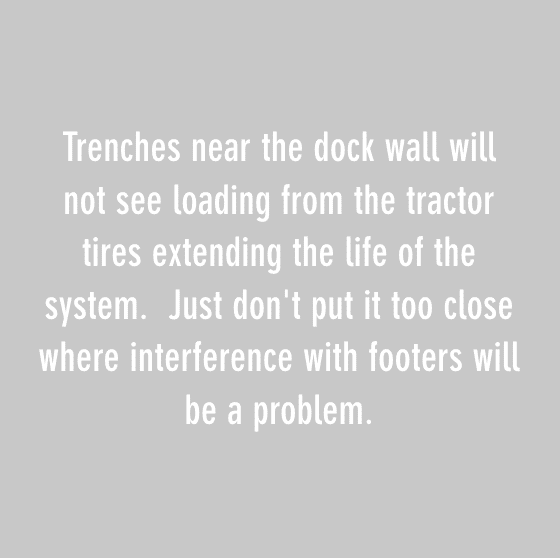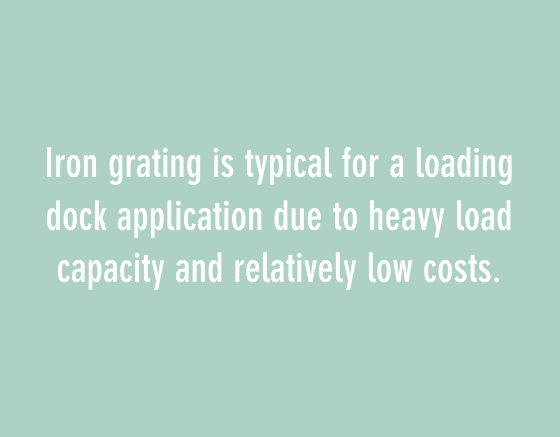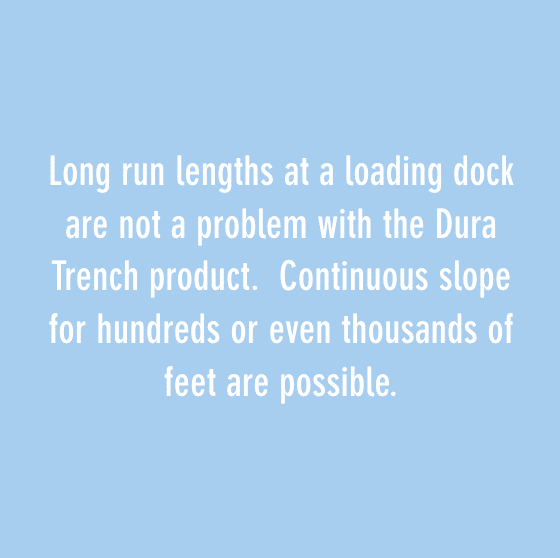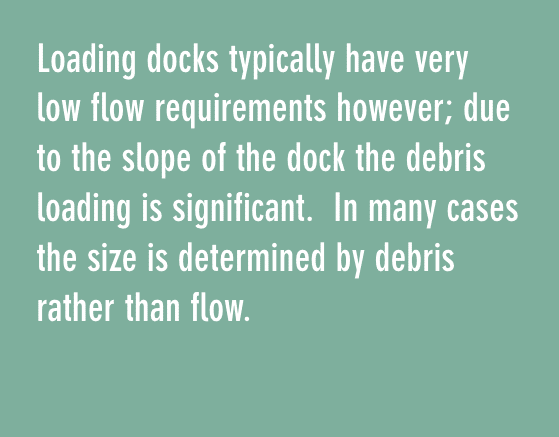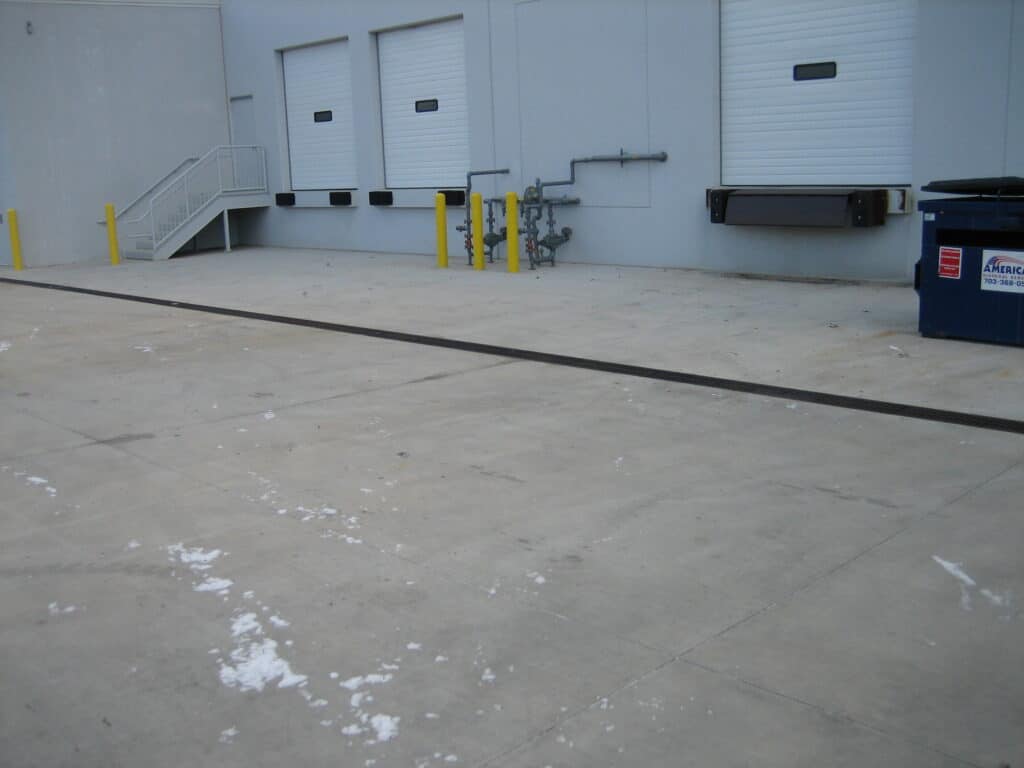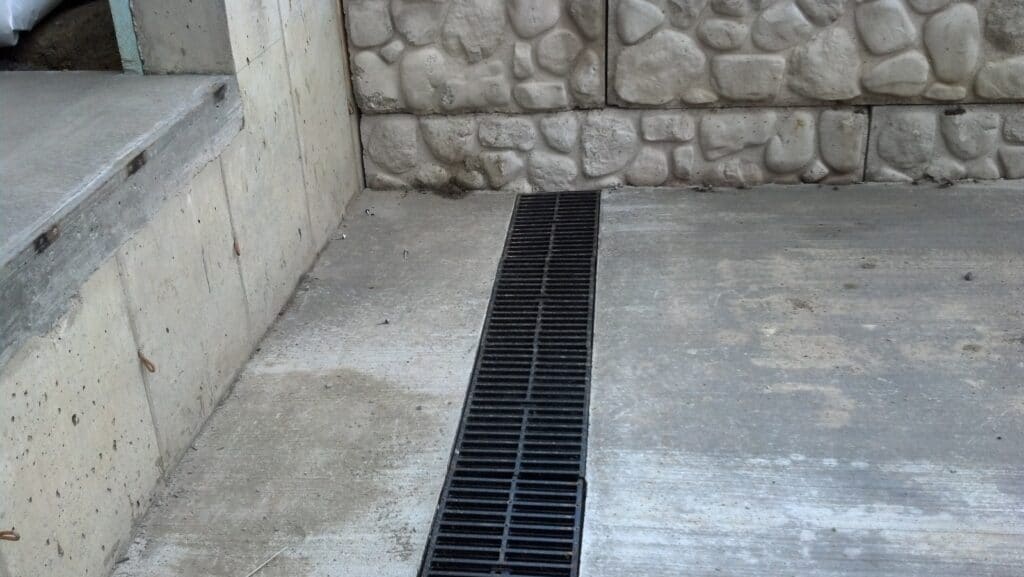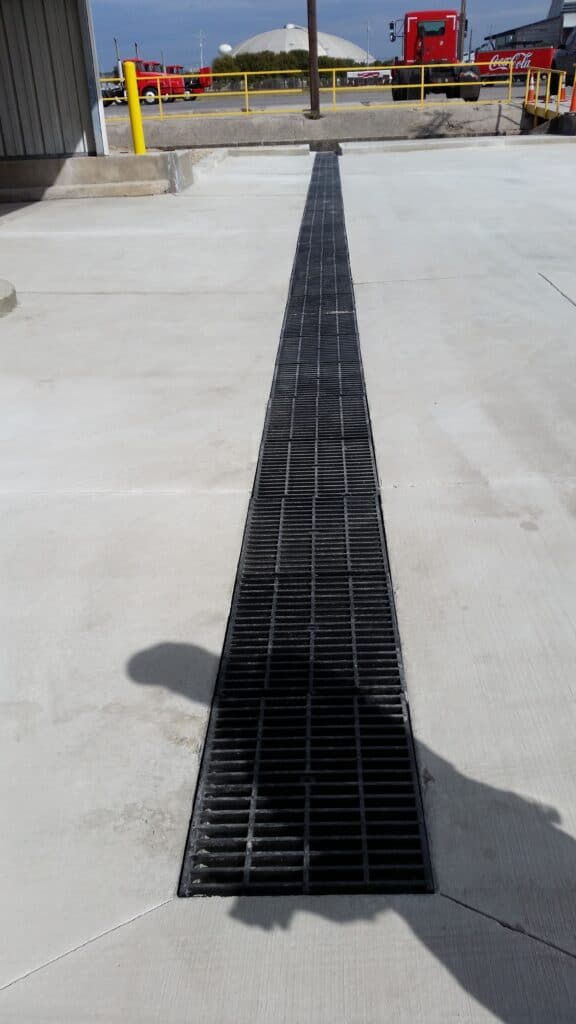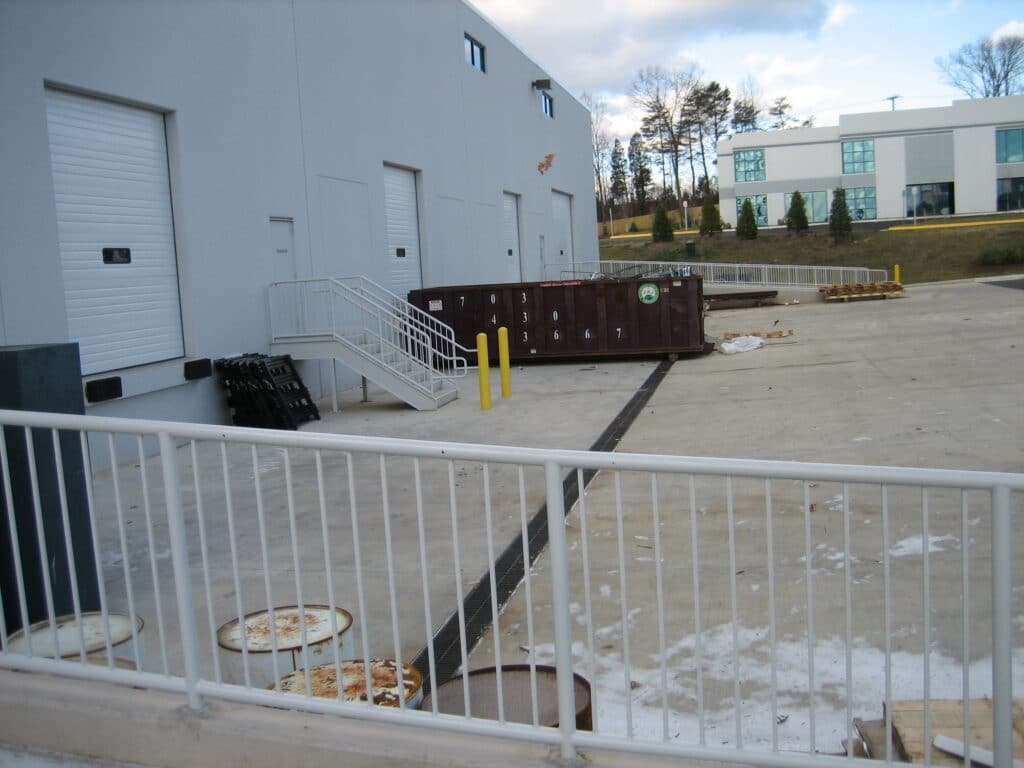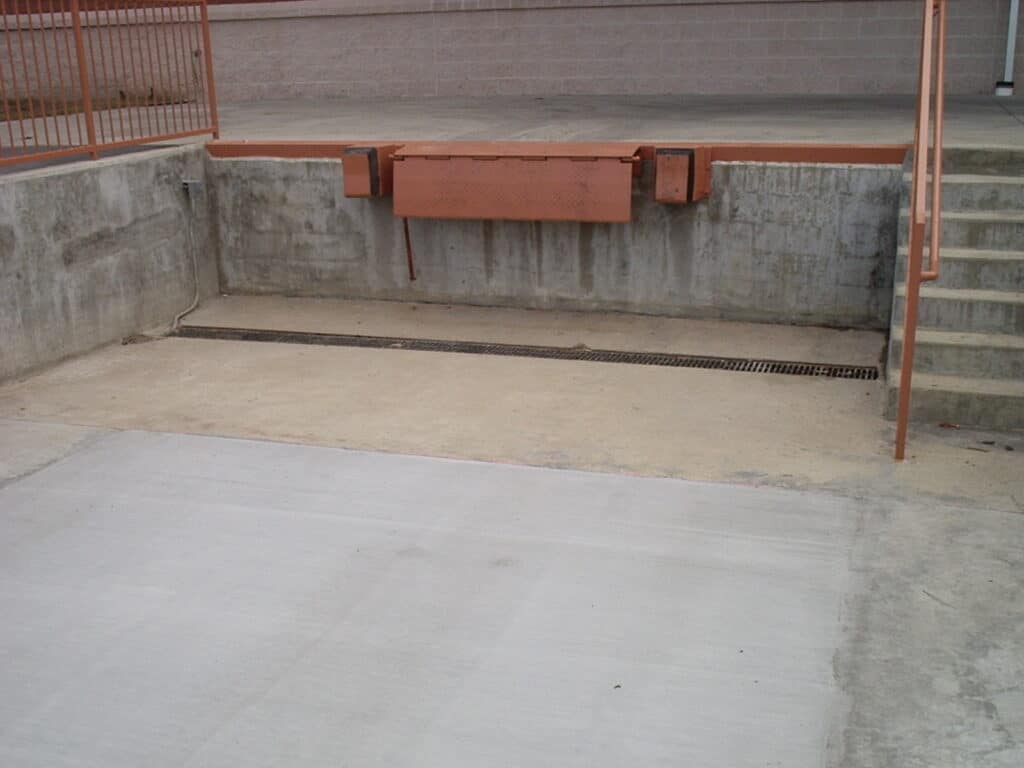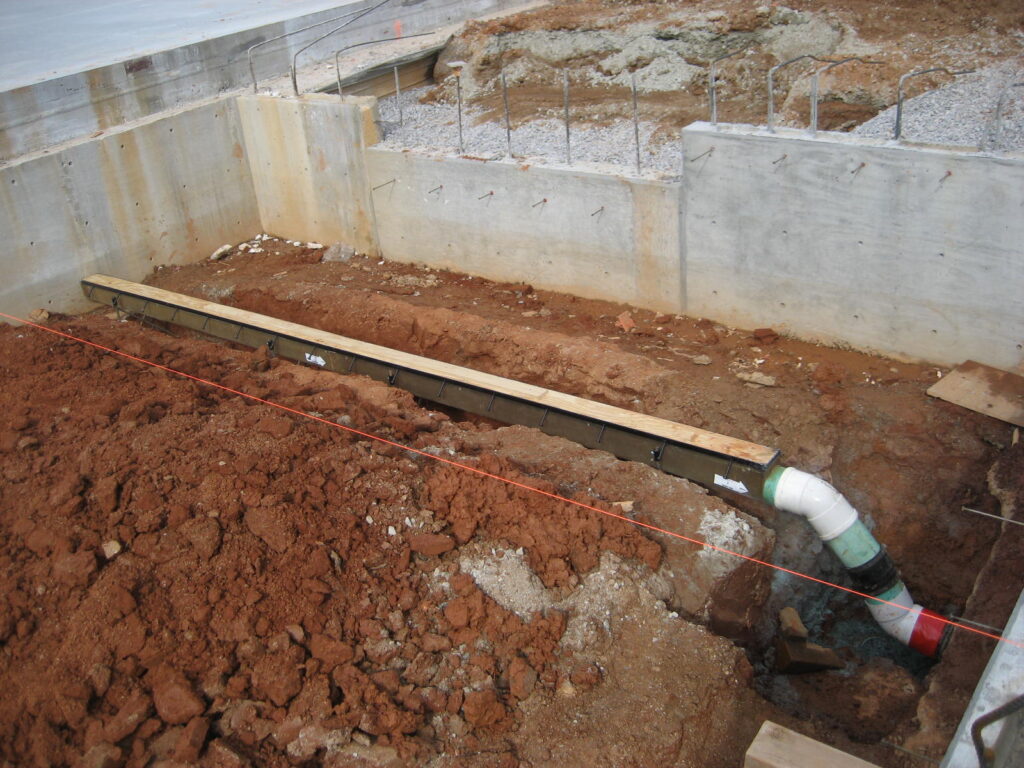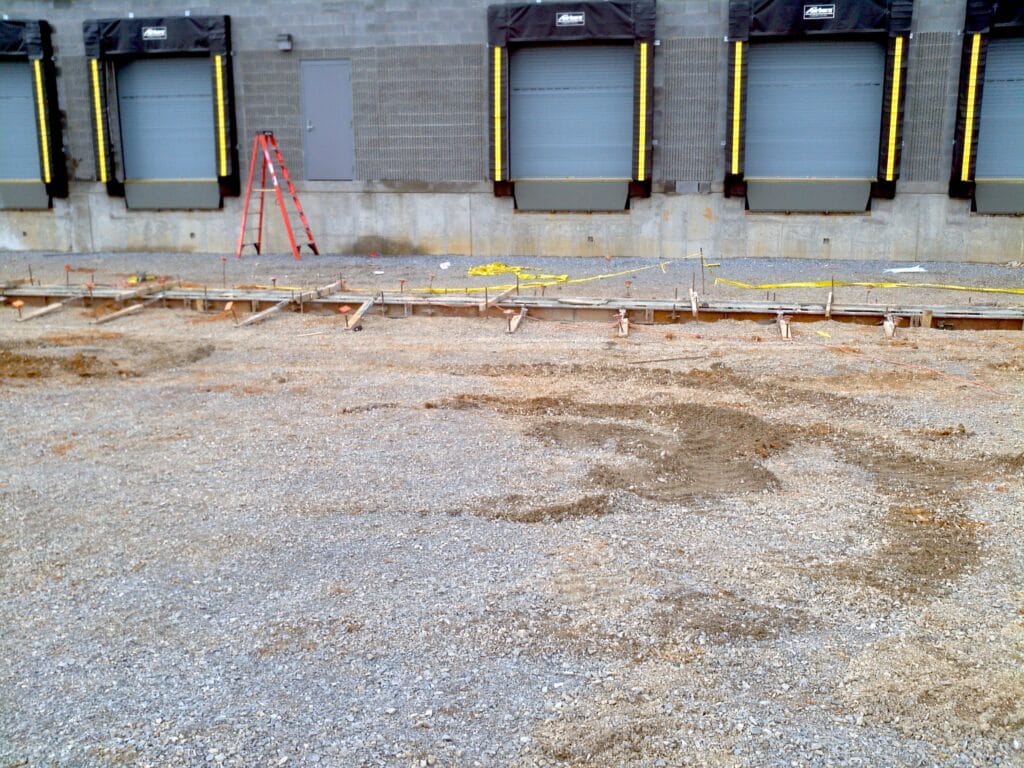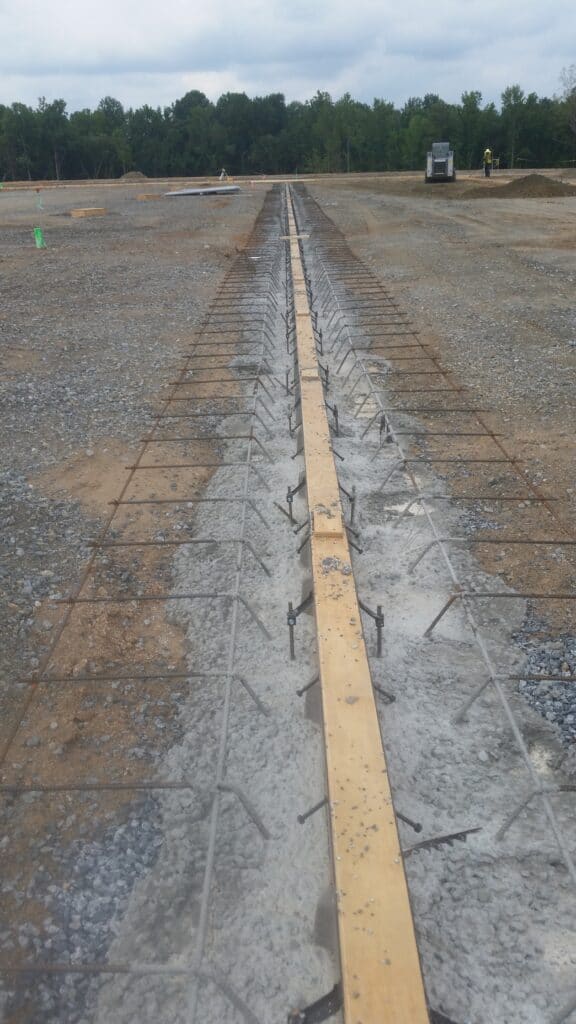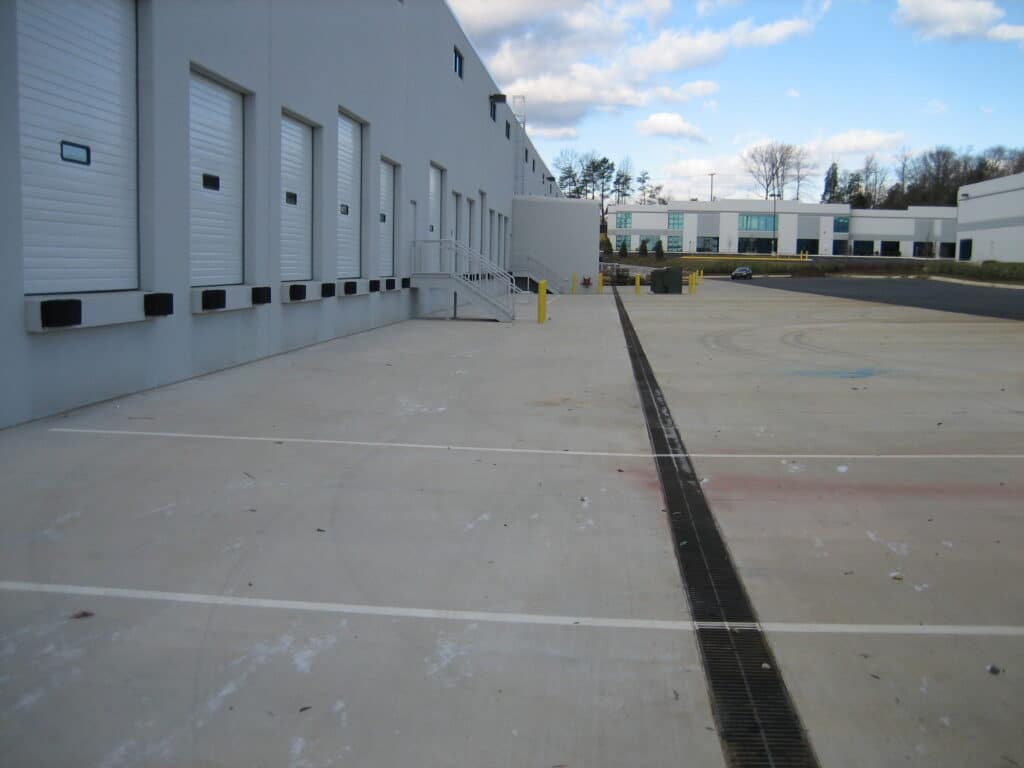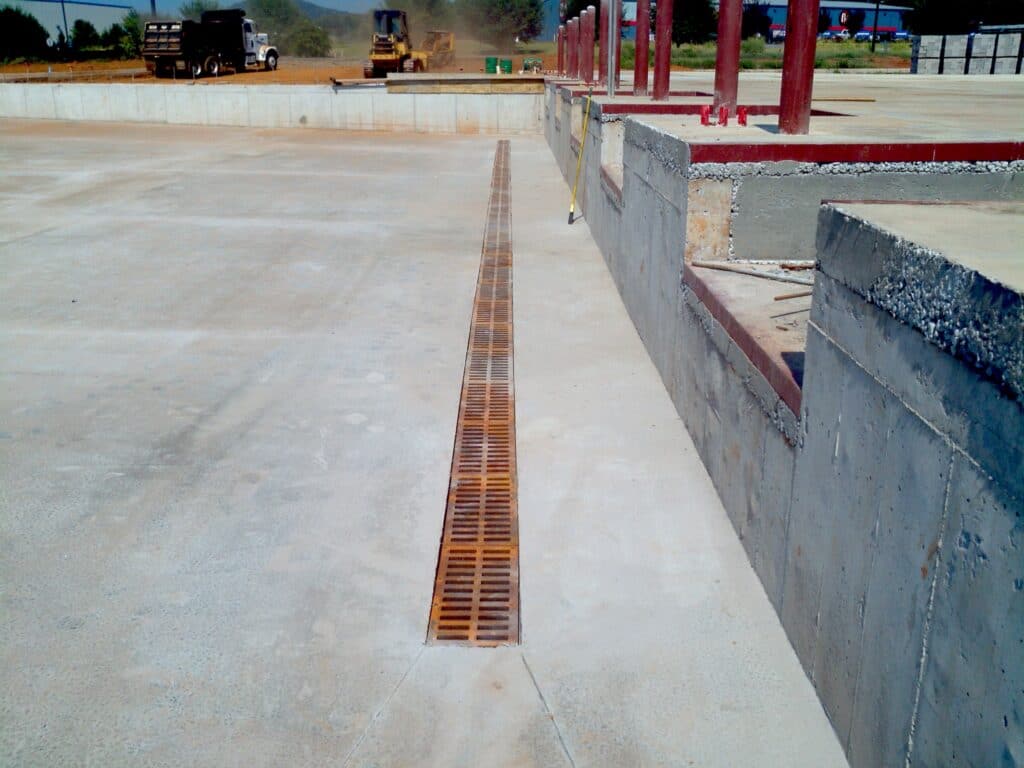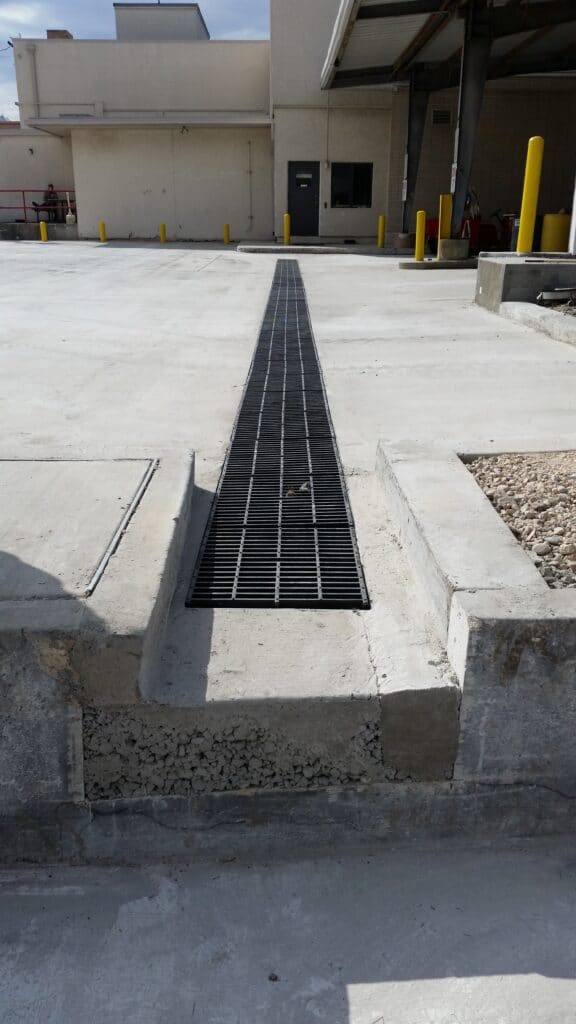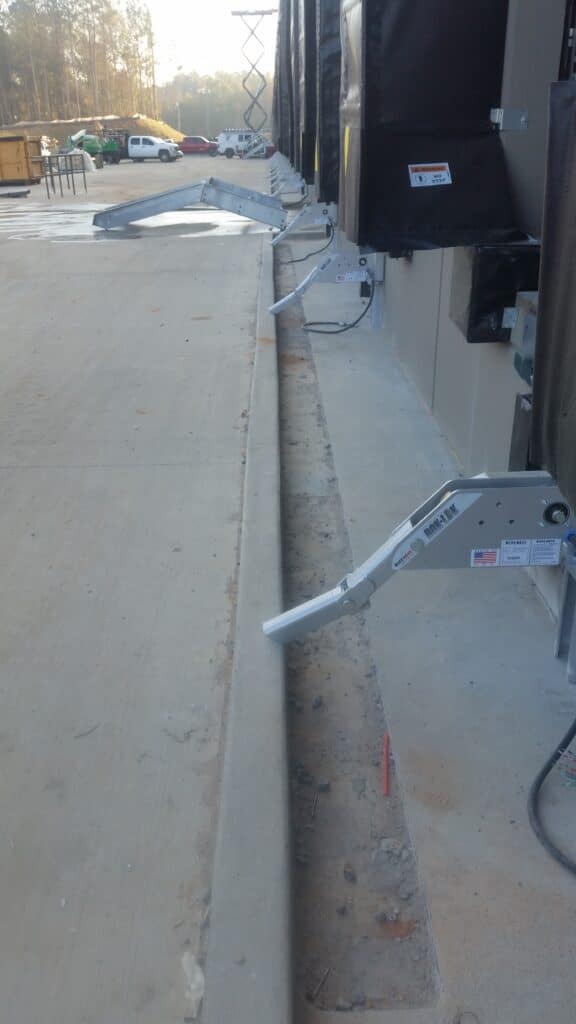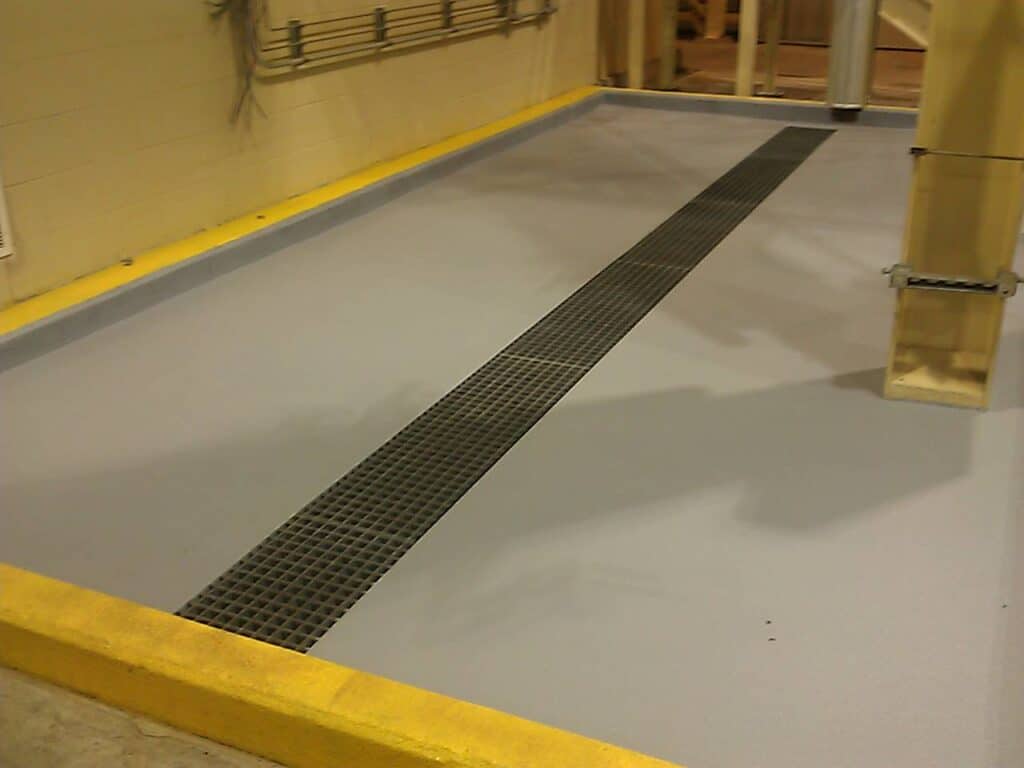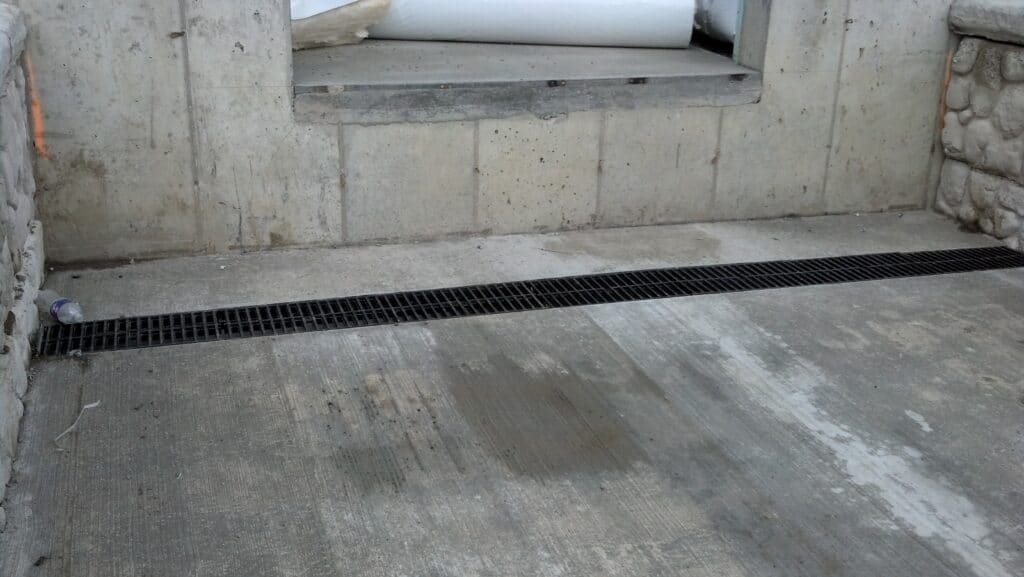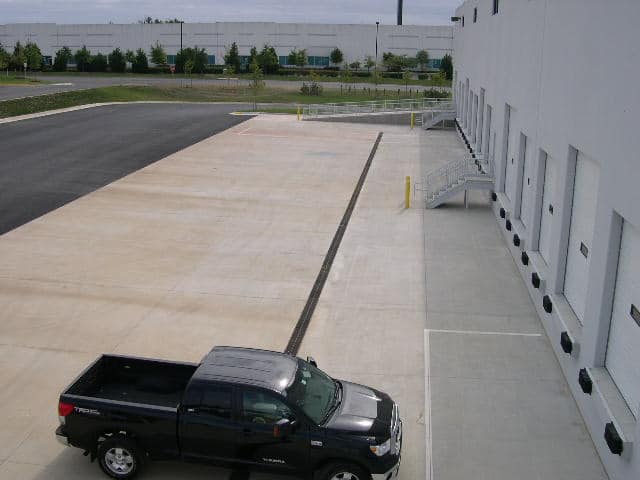Truck docks are often below the grade of the rest of the site and therefore require a drainage system. The standard truck dock height is 48″ below finish floor of the building. A trench drain is the most logical solution to keep this dock from becoming full of water and simplifies the concrete construction. Traditionally a loading dock trench drain was a 12″ wide cast in place trench drain. The 12″ wide size was common because it was easy to construct wooden forms of this size. With the speed and availability of prefabriacted trench drain systems, they are now the preference and are becoming more common. In many cases the size of the trench can be reduced with a prefabricated system. The only reason for a larger trench drain in a loading dock would be if heavy debris loads are expected.
The trench drain grates on these systems should be capable of handling vehicular loading if they will be far enough from the dock where trucks can get their wheels on them. Often times the drains can be placed where the truck wheels will never reach the drain allowing for lighter duty systems to be used.


